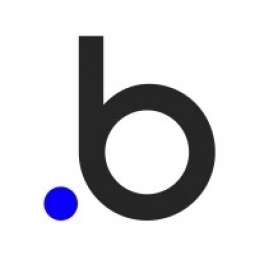Technology Category
- Platform as a Service (PaaS) - Application Development Platforms
- Robots - Wheeled Robots
Applicable Industries
- Cement
- Cities & Municipalities
Use Cases
- Smart City Operations
- Time Sensitive Networking
About The Customer
Hidden City Hunts is an innovative company that provides interactive scavenger hunts that can be played on a smartphone. The company offers a unique and engaging way for users to explore new places, solve cryptic clues, and discover hidden gems. The company's founder, Adam Lack, has a background in the live entertainment industry and a passion for developing systems and trying out various online tools and platforms. He discovered Bubble, a no-code platform, in 2016 and has been using it to build and launch his web app. Hidden City Hunts has recently gone live after a short closed beta phase and has received positive feedback from its users.
The Challenge
Hidden City Hunts, founded by Adam Lack, was faced with the challenge of creating an interactive scavenger hunt game that could be played on a mobile browser. The goal was to provide users with an engaging and educational experience while exploring new places. The challenge was to develop a system that would allow users to choose a trail, book it, and then play the game on their smartphones. The game needed to be designed in such a way that it would provide cryptic clues for players to solve and discover hidden gems, all while learning interesting facts. The system also needed to have a scoring mechanism that would record each game's points and time, allowing players to rate their achievements.
The Solution
The solution was found in Bubble, a no-code platform that allowed Adam to build and launch a fully functional and customizable web app without any limitations. With Bubble, Adam was able to create an app where users could explore scavenger hunt trails, read descriptions, and view public leaderboards for each trail. After signing up, users could book a trail and pay via Stripe, then receive their trail link to play on their smartphone. The game was designed to be played via the phone's browser, eliminating the need for a separate app. When the trail begins, players receive their first cryptic clue and move forward by submitting their answer. The scoring for each game is recorded using both a points and time system.
Operational Impact
Quantitative Benefit

Case Study missing?
Start adding your own!
Register with your work email and create a new case study profile for your business.
Related Case Studies.

Case Study
Turning A Stadium Into A Smart Building
Honeywell created what it called the “intelligent system” for the National Stadium in Beijing, China, turning the venue for the opening and closing events at the 2008 Summer Olympics into a “smart building.” Designed by highly controversial artist Ai Weiwei, the “Bird’s Nest” remains one of the most impressive feats of stadium architecture in the world. The 250,000 square meter structure housed more than 100,000 athletes and spectators at a time. To accommodate such capacity, China turned to Honeywell’s EBI Integrated Building Management System to create an integrated “intelligent system” for improved building security, safety and energy efficiency.

Case Study
System 800xA at Indian Cement Plants
Chettinad Cement recognized that further efficiencies could be achieved in its cement manufacturing process. It looked to investing in comprehensive operational and control technologies to manage and derive productivity and energy efficiency gains from the assets on Line 2, their second plant in India.
.png)
Case Study
Smart Street Light Network (Copenhagen)
Key stakeholders are taking a comprehensive approach to rethinking smart city innovation. City leaders have collaborated through partnerships involving government, research institutions and solution providers. The Copenhagen Solutions Lab is one of the leading organizations at the forefront of this movement. By bringing together manufacturers with municipal buyers, the Copenhagen Solutions Lab has catalyzed the development and deployment of next-generation smart city innovations. Copenhagen is leveraging this unique approach to accelerate the implementation of smart city solutions. One of the primary focus areas is LED street lighting.

Case Study
Buoy Status Monitoring with LoRa
The Netherlands are well-known for their inland waterways, canals, sluices and of course port activities. The Dutch Ministry of Infrastructure indicates that there are thousands of buoys and fixed items in and near water environments that would profit from IoT monitoring. One of the problems with buoys for example, is that they get hit by ships and the anchor cable breaks. Without connectivity, it takes quite some time to find out that something has happened with that buoy. Not to mention the costs of renting a boat to go to the buoy to fix it. Another important issue, is that there is no real-time monitoring of the buoys at this moment. Only by physically visiting the object on the water, one gains insight in its status.

Case Study
China Mobile Smart Parking
Smart Parking, powered by NB-IoT technology, is making it easier for drivers to find free parking spots. Cities can better manage their parking assets and maximize the revenue available to them as a result. Drivers searching for parking create congestion and pollution by circling and hunting for available parking. Smart Parking services are able to significantly ease these problems by guiding a driver directly to a parking space.




